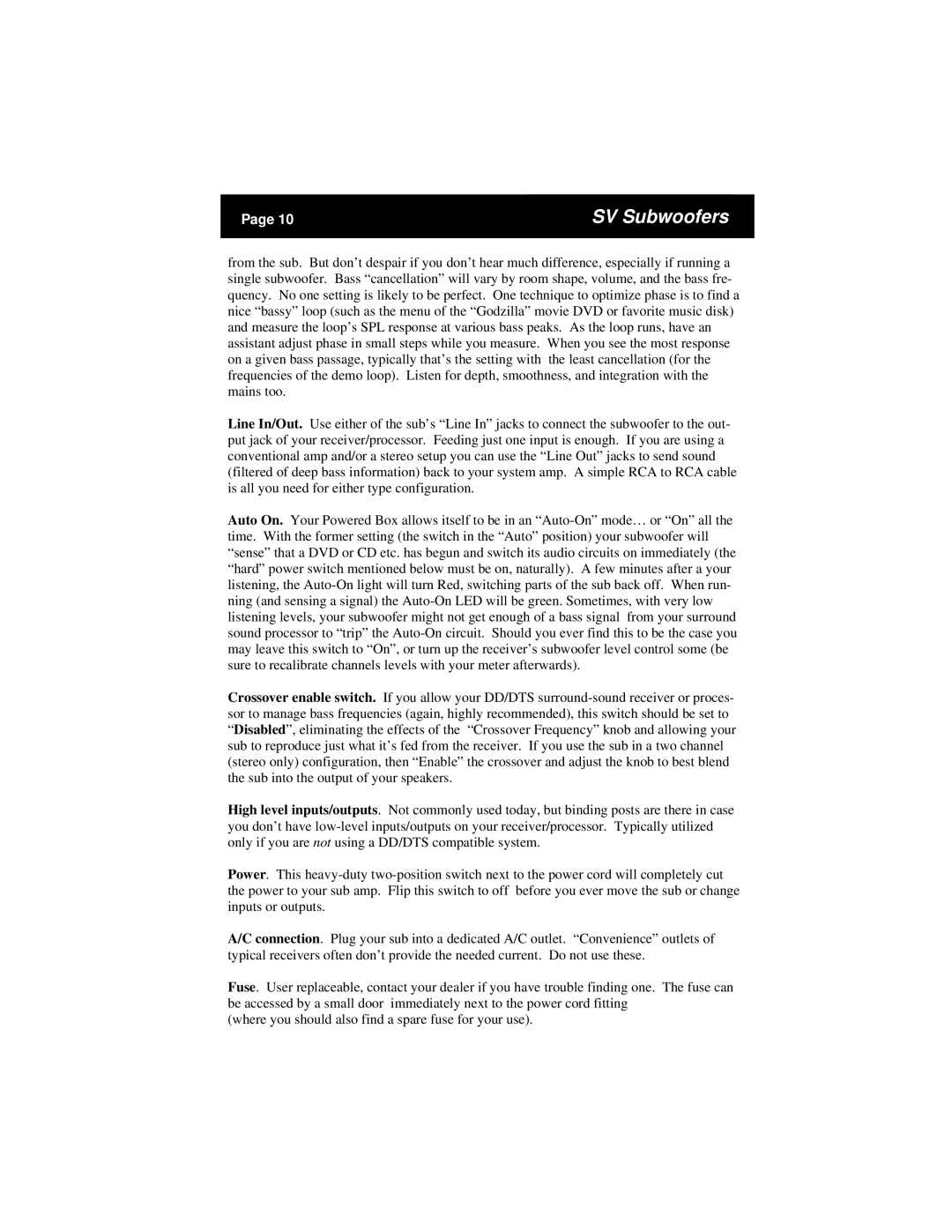Page 10 | SV Subwoofers |
|
|
from the sub. But don’t despair if you don’t hear much difference, especially if running a single subwoofer. Bass “cancellation” will vary by room shape, volume, and the bass fre- quency. No one setting is likely to be perfect. One technique to optimize phase is to find a nice “bassy” loop (such as the menu of the “Godzilla” movie DVD or favorite music disk) and measure the loop’s SPL response at various bass peaks. As the loop runs, have an assistant adjust phase in small steps while you measure. When you see the most response on a given bass passage, typically that’s the setting with the least cancellation (for the frequencies of the demo loop). Listen for depth, smoothness, and integration with the mains too.
Line In/Out. Use either of the sub’s “Line In” jacks to connect the subwoofer to the out- put jack of your receiver/processor. Feeding just one input is enough. If you are using a conventional amp and/or a stereo setup you can use the “Line Out” jacks to send sound (filtered of deep bass information) back to your system amp. A simple RCA to RCA cable is all you need for either type configuration.
Auto On. Your Powered Box allows itself to be in an
Crossover enable switch. If you allow your DD/DTS
High level inputs/outputs. Not commonly used today, but binding posts are there in case you don’t have
Power. This
A/C connection. Plug your sub into a dedicated A/C outlet. “Convenience” outlets of typical receivers often don’t provide the needed current. Do not use these.
Fuse. User replaceable, contact your dealer if you have trouble finding one. The fuse can be accessed by a small door immediately next to the power cord fitting
(where you should also find a spare fuse for your use).
